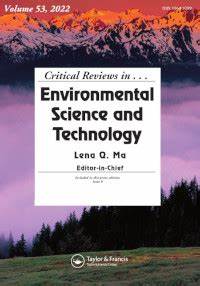Electrochemical phosphorus release and recovery from wastewater sludge: A review
IF 11.4
1区 环境科学与生态学
Q1 ENVIRONMENTAL SCIENCES
Critical Reviews in Environmental Science and Technology
Pub Date : 2023-02-06
DOI:10.1080/10643389.2023.2172928
引用次数: 4
Abstract
Abstract Phosphorus (P) is abundant in wastewater sludge and can be a secondary P source that will contribute to a circular economy. Electrochemical systems are an emerging technology that can be used to release and recover P from wastewater sludge. This paper introduces and analyzes the state-of-the-art electrochemical methods for P release and recovery from wastewater sludge, both qualitatively and quantitatively. Electrochemical P release, which involves mobilizing P from the solid phase into the aqueous phase, is categorized into three major mechanisms, electro-biological release, anodic P release, and cathodic P release. Anodic P release has been most widely studied with a median P release rate of 92.4 mg d−1. Correlation analysis revealed that the type of feed sludge, sludge P contents, sludge loading rate, and current density have a significant impact on the P release performance. The released P is subsequently separated from the heavy metal laden sludge and then recovered via different electrochemical systems such as three-chamber cells, two-chamber cells, and their variations. Those systems can achieve P recovery efficiency of 50 ∼ 80% and a recovery rate of 2.0 × 102∼1.8 × 103 mg P d−1. Energy consumption of electrochemical P recovery is estimated at 50 ∼ 200 kWh kg−1 P but only 27.3% of literature reported such data. This work provides insights into the development and challenges of electrochemical P release & recovery from wastewater sludge and discusses the challenges that need to be addressed to advance the viability of electrochemical P recovery approach.废水污泥中磷的电化学释放与回收研究进展
摘要磷(P)在污水污泥中含量丰富,可以作为二次磷源,有助于循环经济。电化学系统是一项新兴技术,可用于从废水污泥中释放和回收磷。本文从定性和定量两方面介绍和分析了目前最先进的电化学方法对废水污泥中磷的释放和回收。电化学P释放是指将P从固相转移到水相的过程,主要有电生物释放、阳极P释放和阴极P释放三种机制。阳极P释放研究最为广泛,中位P释放率为92.4 mg d - 1。相关分析表明,饲料污泥类型、污泥磷含量、污泥负荷率和电流密度对磷释放性能有显著影响。释放出的磷随后从重金属污泥中分离出来,然后通过不同的电化学系统(如三室电池、两室电池及其变体)进行回收。这些系统的P回收率为50 ~ 80%,回收率为2.0 × 102 ~ 1.8 × 103 mg P d−1。电化学P回收的能量消耗估计为50 ~ 200 kWh kg - 1 P,但只有27.3%的文献报道了这一数据。这项工作提供了对废水污泥电化学P释放和回收的发展和挑战的见解,并讨论了需要解决的挑战,以推进电化学P回收方法的可行性。
本文章由计算机程序翻译,如有差异,请以英文原文为准。
求助全文
约1分钟内获得全文
求助全文
来源期刊
CiteScore
27.30
自引率
1.60%
发文量
64
审稿时长
2 months
期刊介绍:
Two of the most pressing global challenges of our era involve understanding and addressing the multitude of environmental problems we face. In order to tackle them effectively, it is essential to devise logical strategies and methods for their control. Critical Reviews in Environmental Science and Technology serves as a valuable international platform for the comprehensive assessment of current knowledge across a wide range of environmental science topics.
Environmental science is a field that encompasses the intricate and fluid interactions between various scientific disciplines. These include earth and agricultural sciences, chemistry, biology, medicine, and engineering. Furthermore, new disciplines such as environmental toxicology and risk assessment have emerged in response to the increasing complexity of environmental challenges.
The purpose of Critical Reviews in Environmental Science and Technology is to provide a space for critical analysis and evaluation of existing knowledge in environmental science. By doing so, it encourages the advancement of our understanding and the development of effective solutions. This journal plays a crucial role in fostering international cooperation and collaboration in addressing the pressing environmental issues of our time.

 求助内容:
求助内容: 应助结果提醒方式:
应助结果提醒方式:


